Amantaní, just one boat from the past
Stepping off the boat onto Amantaní Island, I felt like I had just gone through a time warp back into 2019. Despite the strong Covid-19 restrictions in Peru, this island on Lake Titicaca has gone back to life as normal. I was invited to take off my mask and shake hands with everybody. The mother of the family I stayed with gave me a big hug when I got to their home. Months ago, about 80% of the island population tested positive for Covid-19, though nobody said that they had felt sick. This is entirely possible. The National Institutes of Health published a fascinating study a year ago about how populations at high altitude have a high rate of being asymptomatic. One city studied in Sichuan, China, showed that over half of Covid-19 patients were completely asymptomatic, while of those who had symptoms, less than 10% had any fever. The higher the altitude, the higher the rate of asymptomatic patients.
Amantaní is at 3,945 meters above sea level (12,943 feet), which puts it higher than the cities in the study. Though 80% of the island tested positive with both a rapid antigen test and a PCR test, nobody on the island reported any symptoms. Also, nobody was having any more of the Covid restrictions that are still in effect in Peru. They have had it with the pandemic, which is what made me feel like I had gone through a time warp, stepping onto the island and into a world without Covid-19. I’ve already had Covid, so I wasn’t so worried about catching it again. It was lovely and so freeing.
The highest navigable lake in the world
At this altitude the air is so thin and so clear that those coming from a lower altitude often start out their Lake Titicaca visit feeling light-headed. It gives the experience an even more other-worldly feel.
To get from Cusco to Amantaní, I took a shared taxi to Juliaca, then a colectivo van to Capachica. You can walk from where the van drops you off in town down to the water or take a taxi. It takes about six hours from Cusco to Juliaca, including traffic in and out of each town. The van from Juliaca to Capachica is about 45 minutes, as is the boat from Capachica to the island. Plan to arrive in Capachica in the morning because boats after 2pm are rare. A boat will usually wait for at least twelve people, but sometimes they’ll leave with just ten. Leaving the island is also much easier in the morning, which certainly works for most islanders. I’ve never met so many early birds who regularly get up by 5am, especially considering that nobody on the island has to commute for work.
Amantani is small enough that there are no cars on the island. The paths around the island used to be paved with rounded rocks from the shores, smoothed by thousands of waves coming across the lake from Bolivia. Once tourism started, too many people fell, not used to walking on paths cobbled with round rocks. A few years ago, the island community decided to repave all paths to areas that are common with tourists. They dug quarries and cut large, square, flat stones to make the island more accessible for mainlanders. These new paths recently have enticed some islanders to buy dirt bikes, which are obnoxious but so far not many people have them, so you couldn’t say that the island has any traffic.
The Amantaní Tourism President
Abel Mamani helped me with the travel logistics of getting to the island, arranged my homestay and played guide for me the first day I was on the island. This is one of the arches you pass through on your way up to Pachatata, the second highest point on the island, after Pachamama.
The islanders still rely heavily on small, family agricultural plots. In the past decade or so, many have also started to welcome tourists into their homes. There are no hotels on the island and they have developed an organized rotation so that all families who want to participate in the homestay system can benefit equally. Of course, this worked better when there were tour companies bringing groups of tourists to the island every day. With tourism officially shut down, families have lost that income. As far as I could tell, I was the only tourist on the island the three days I was there.
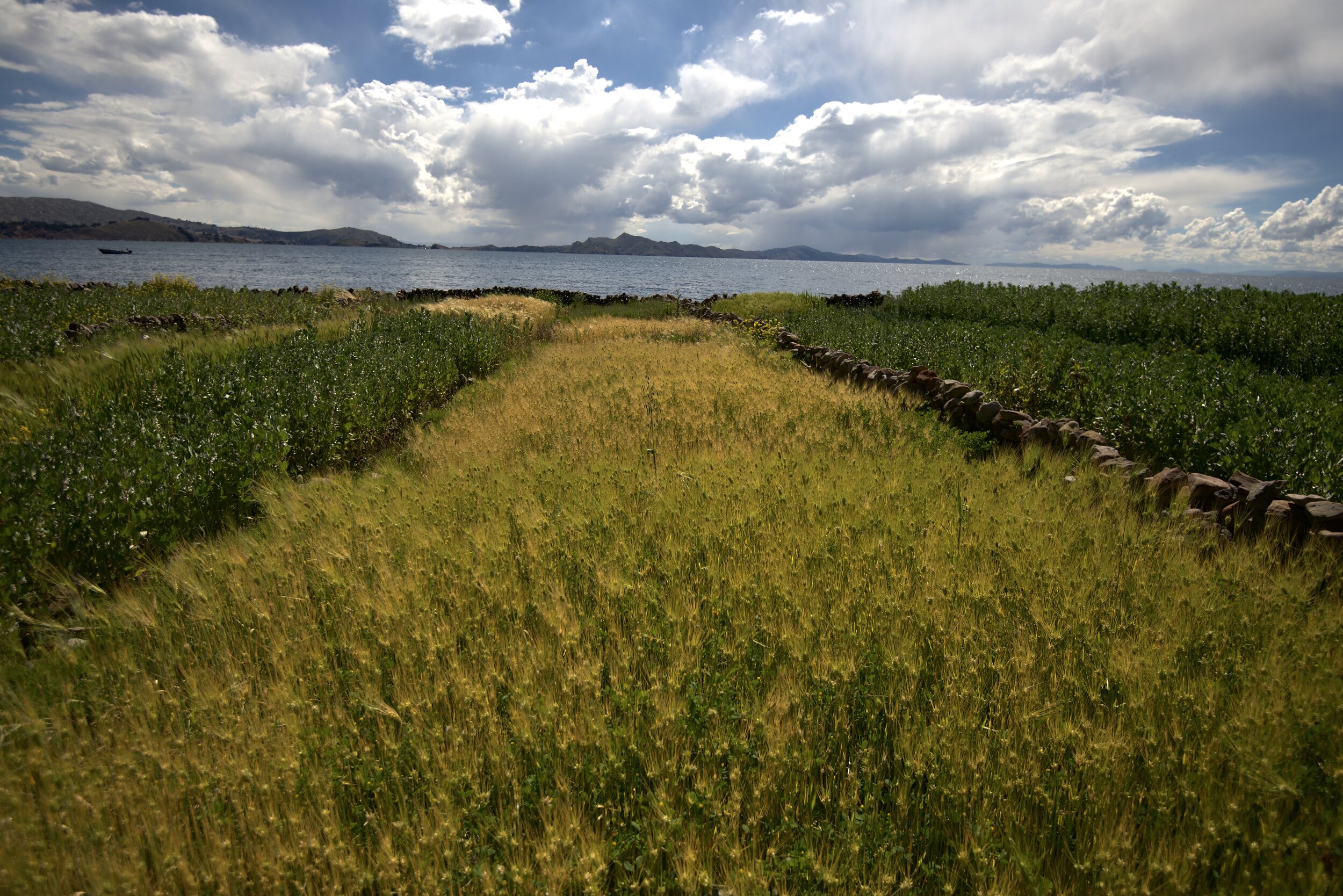
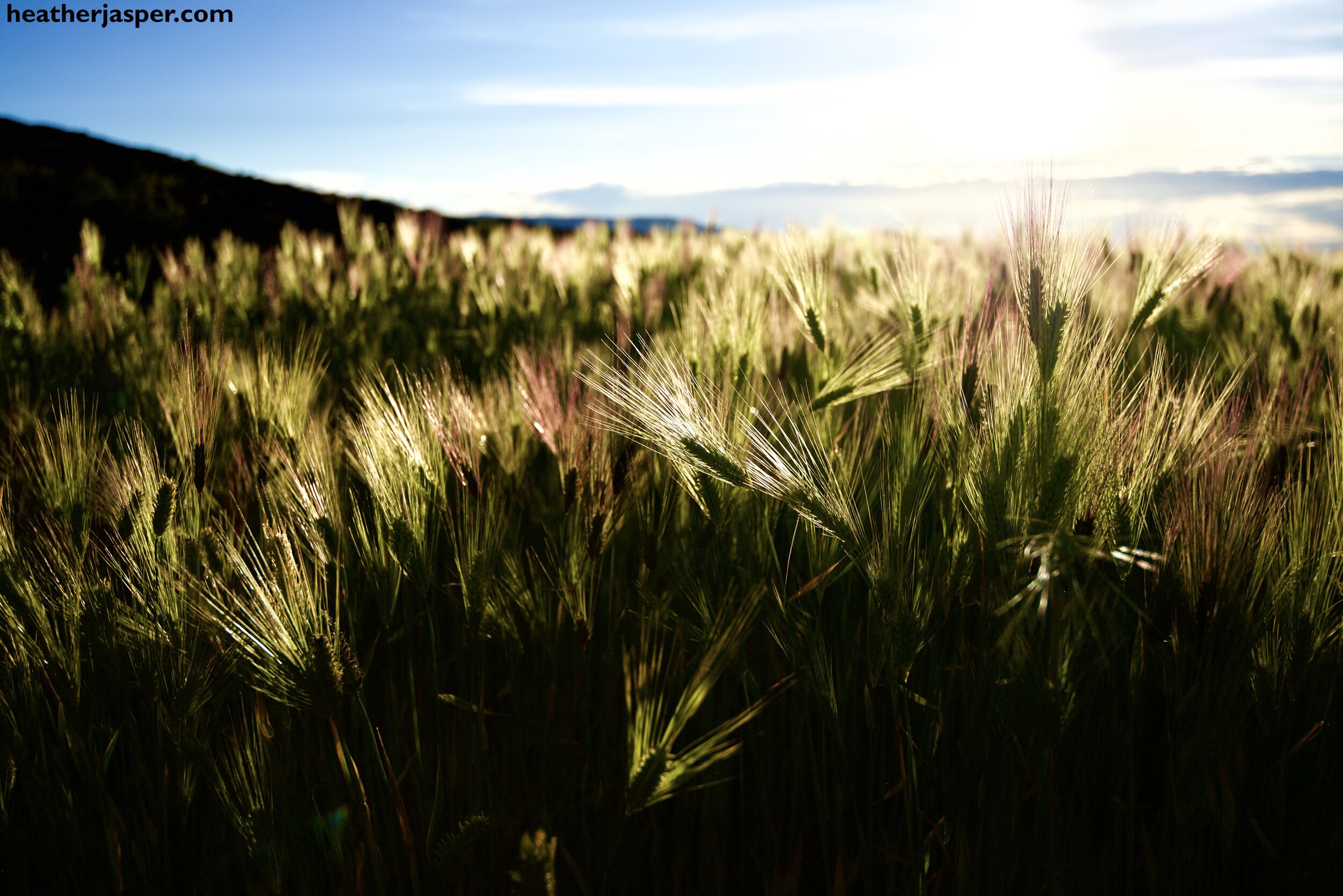
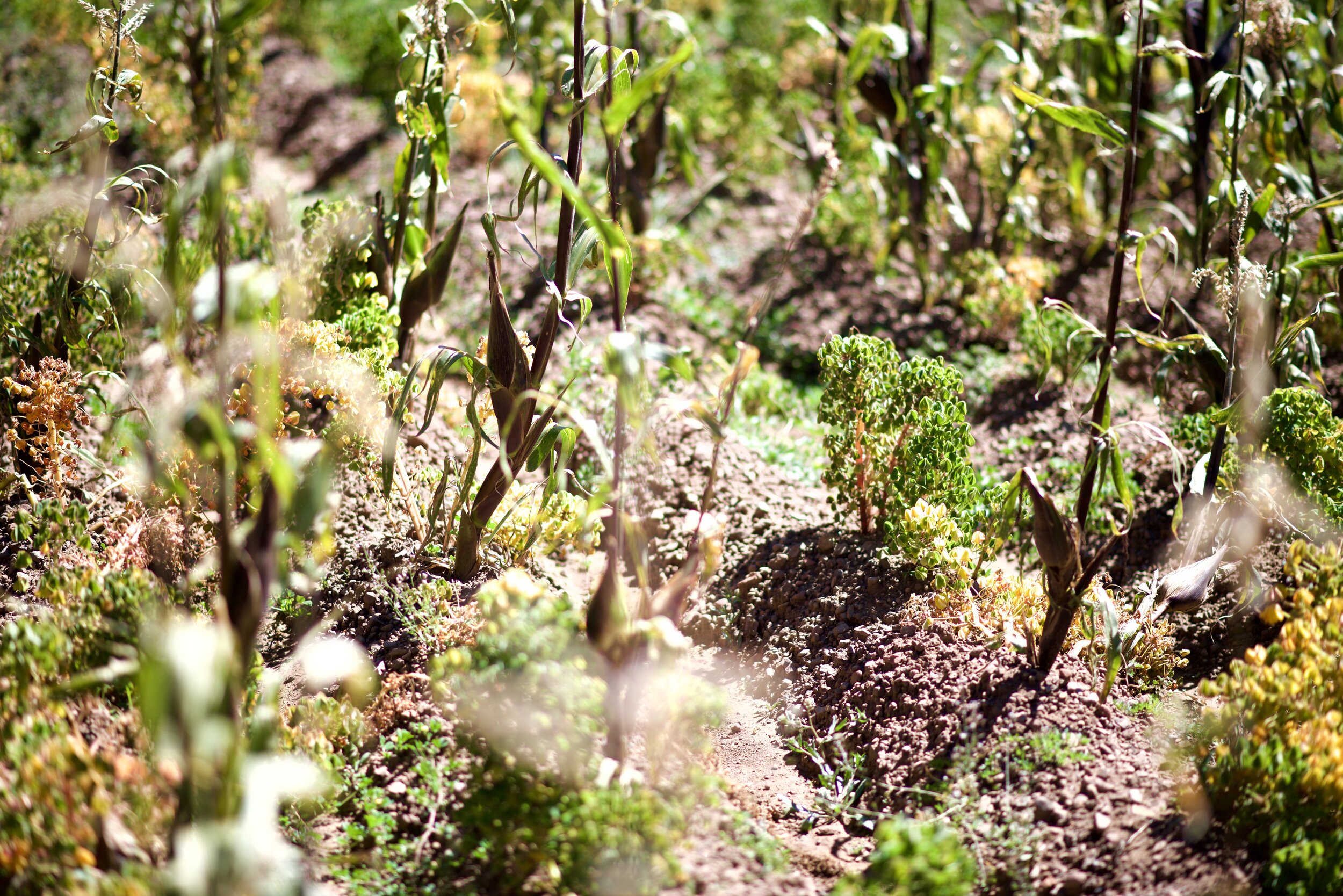
The former system allowed every family to host tourists three days every two months. This left them with plenty of time to tend to their fields when they weren’t hosting. While everybody on the island has felt the economic squeeze of losing that income, at least they have maintained their fields and didn’t go hungry while the rest of the country has been in such a strict lockdown.
My second day on the island was Abel’s mother’s birthday, so early in the morning we started preparing a giant lunch. I didn’t ask how old Anselma Calsin Quispe was, but she is old enough to have two children in their 20s and Abel in his early 30s.On the menu were chocolo, which is fresh corn on the cob, a variety of brightly colored potatoes, oca, sweet potatoes, salad and chicken. Oca is a tuber, like a potato, but the shape, texture and taste of oca is very different from any of the dozens of Peruvian potato varieties that I’ve tried. His younger sister, Alexa, invited me to accompany her to the fields where they have corn and oca planted.
The island has always been highly organized, long before the rotation system for homestays started. Hundreds of years ago, even before the Inca ruled the lake, they developed a rotation system for crops. Suyu is the Quechua word for a fourth or quarter and the island was, and still is, divided into fourths. There is Ocasuyu, the quarter where oca is planted, papasuyu for potatoes, ciwarasuyu for quinoa and other grains. The last suyu is called wasara and it’s for livestock grazing and letting the land rest. It rotates every year, so that no field has the same crop planted two years in a row. Potatoes take the most nutrients out of the soil, so in the rotation, grazing always follows the fourth of the island that had been planted with potatoes the year before.
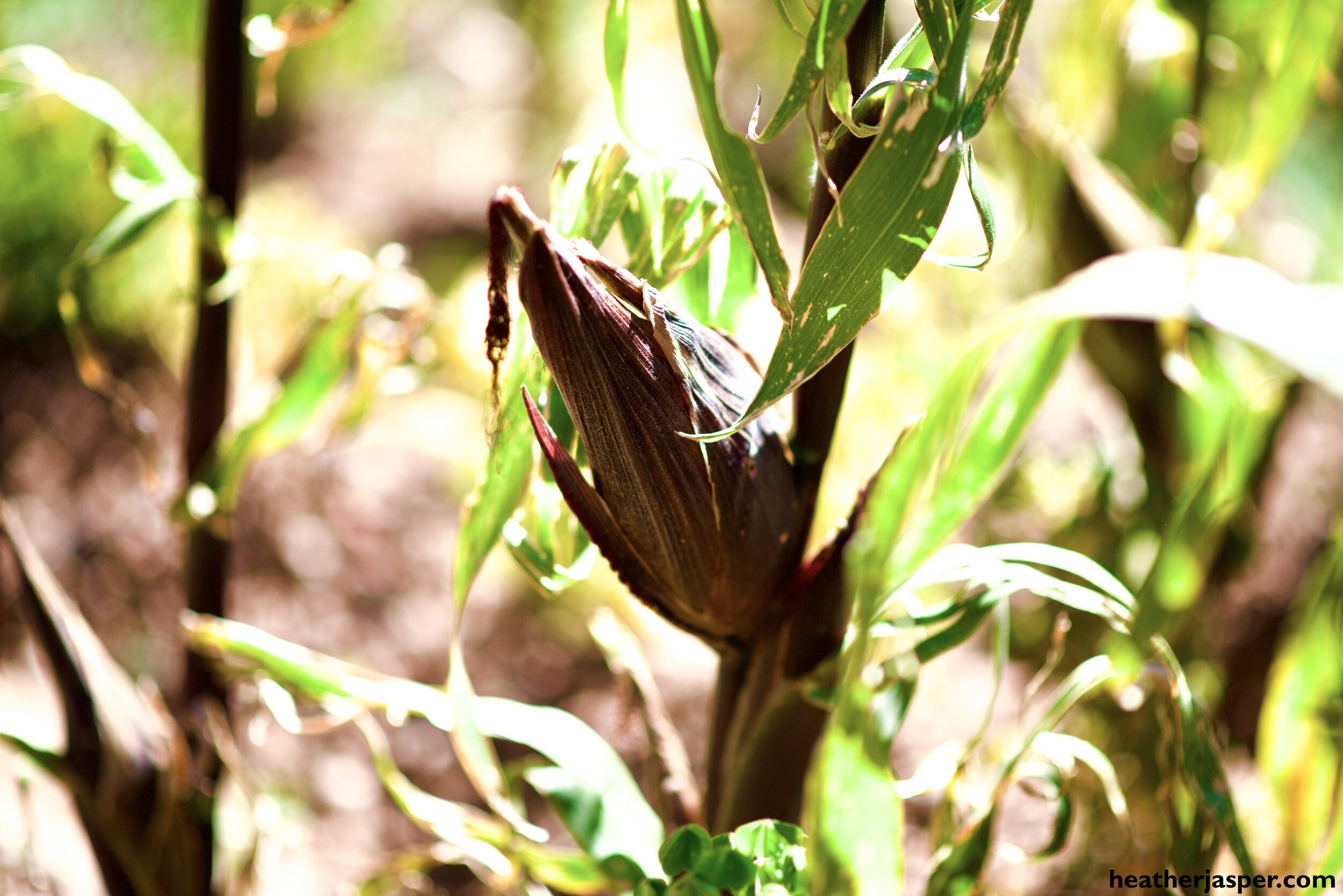
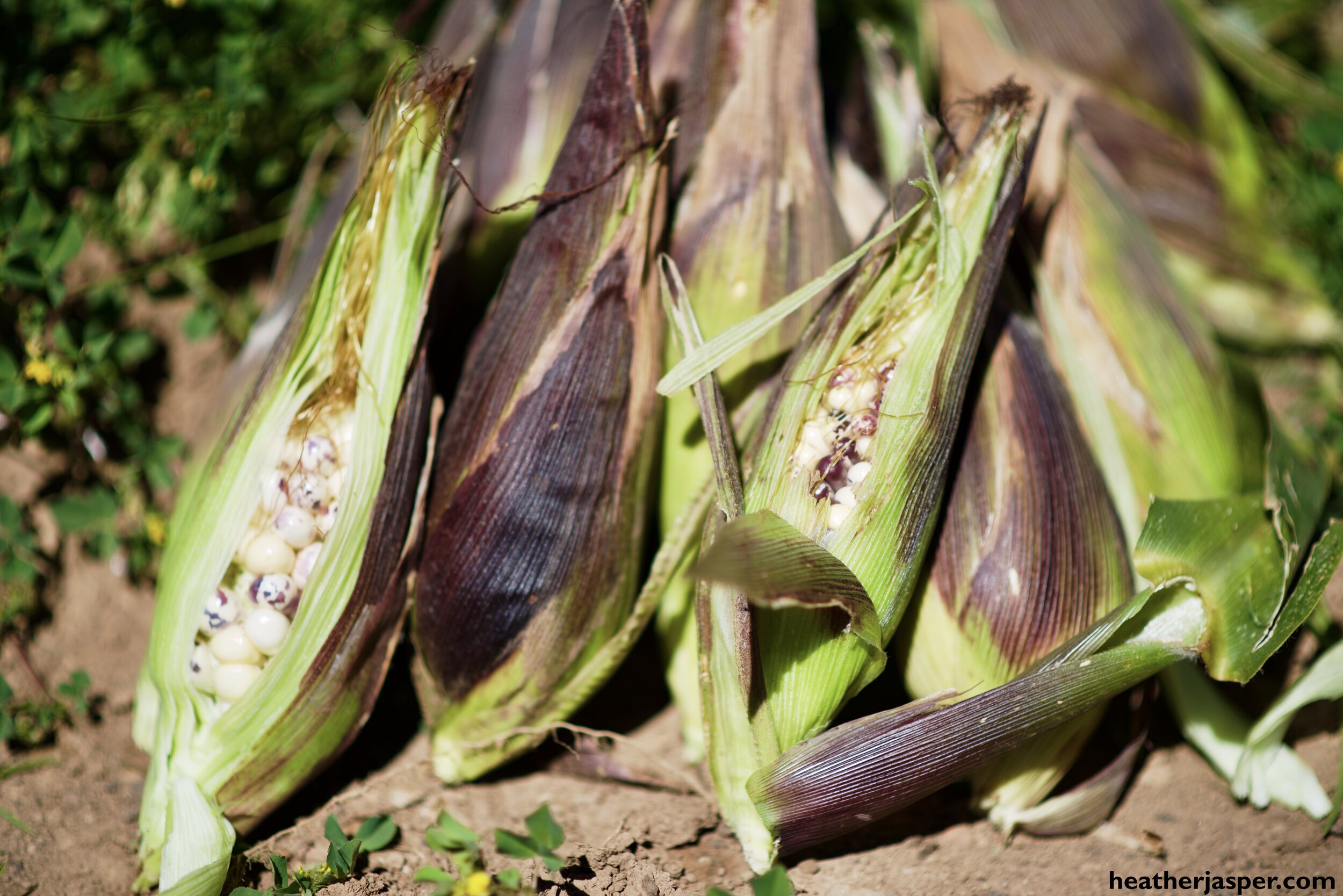
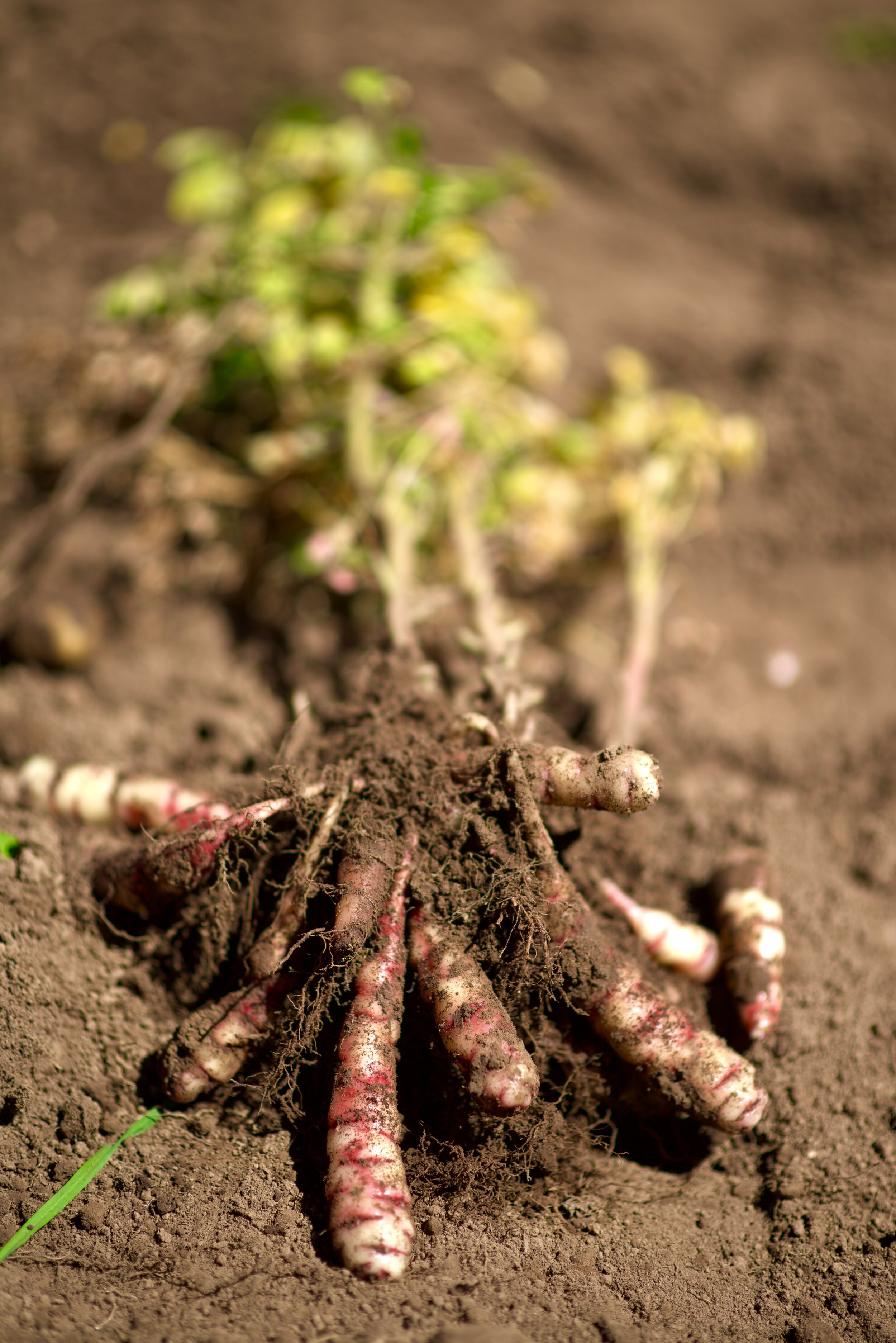
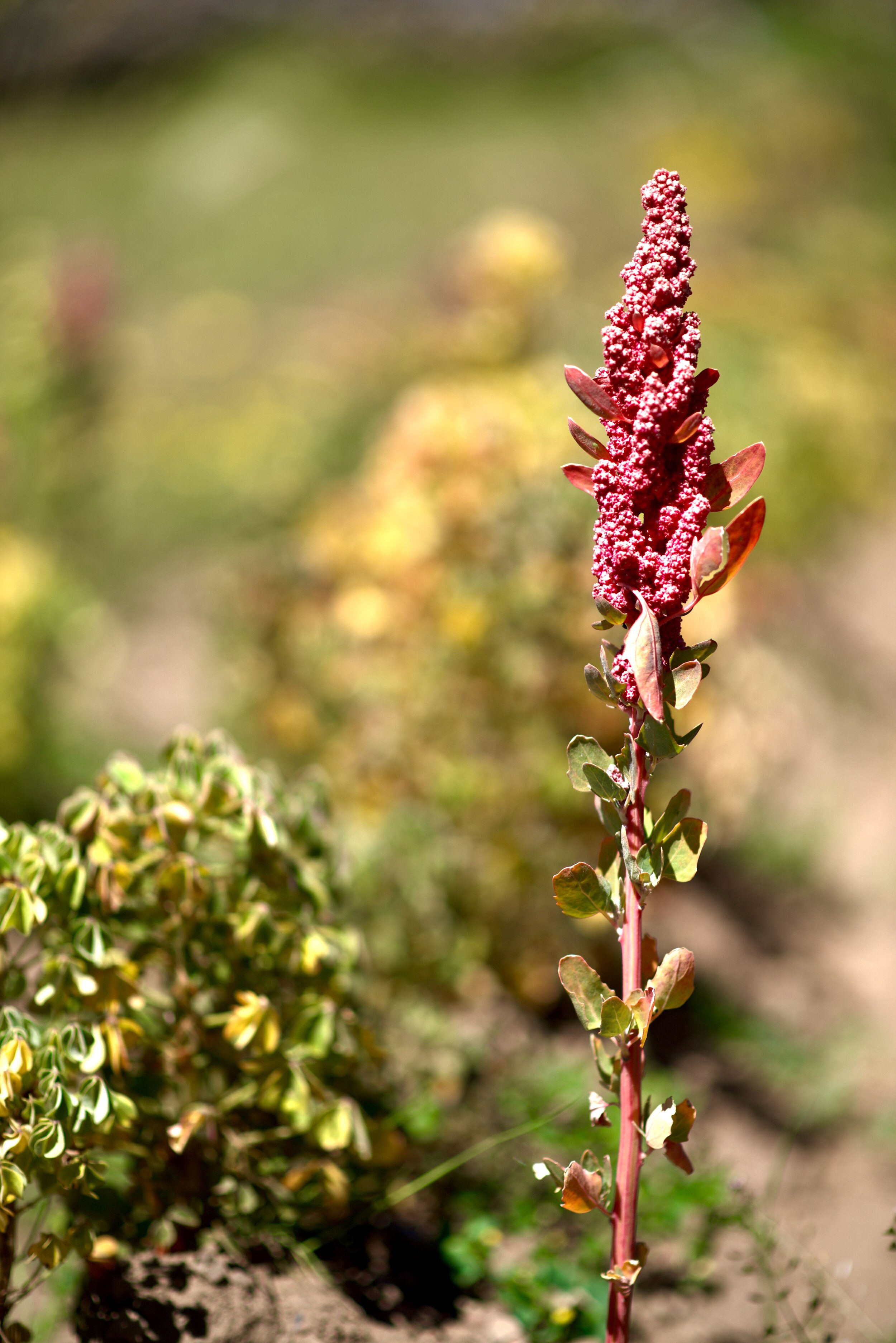
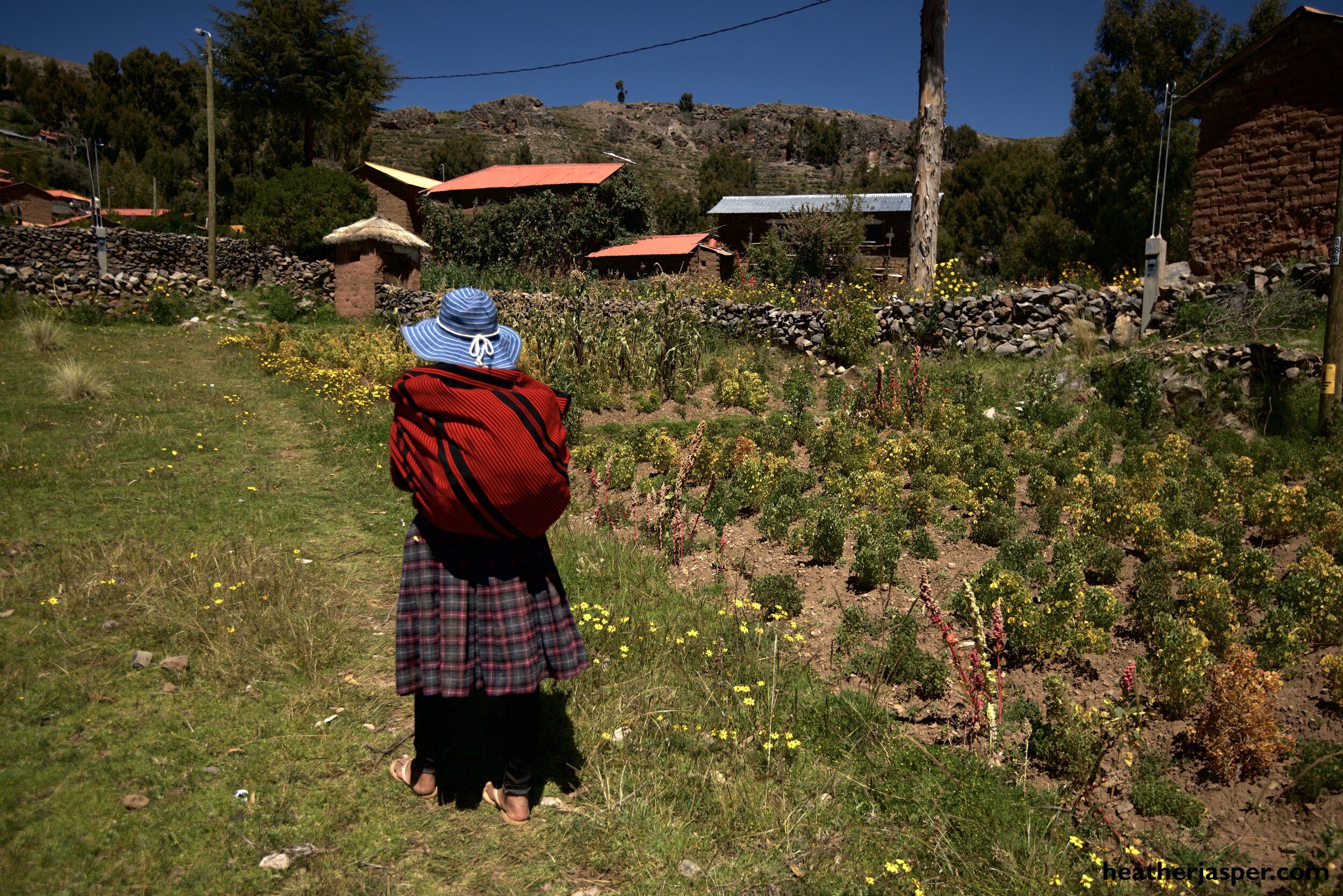
The quarter of the island where Abel’s family lived is currently ocasuyu, though this is not strictly enforced. Alexa had planted a few corn stalks among the oca and I also saw fields with quinoa interspersed among the oca. Most families have small plots in different areas of the island, so they can grow more than one crop in a year. Others trade part of their crop with families who have plots in different suyus, to vary their diet beyond their one yearly crop.
I I picked corn while she dug up a few oca plants. It’s a little early to harvest oca and if she had left the plants a few more weeks, they would have more oca. Still, the birthday was today and we needed something to feed all of the family members who were invited. Back home, we spread the oca on the ground, next to the potatoes that Abel was sorting. He put the oca in a tub to wash and picked out the larger potatoes to wash in another tub. While he and his father started cleaning the tubers, I shucked the corn. The variety of corn most commonly planted on the island is white speckled with purple.
Potatoes and oca
Abel and his father Juan picked out the best of the potatoes they had brought home, sorting out the largest ones. Large potatoes on Amantaní are nothing like large potatoes in Idaho, but they are delicious and come in a wide variety of colors.
Alexa put three giant pots on the stove, one full of potatoes and oca, so full that there was barely space for water between the potatoes. The oca on top was more steamed than boiled. Another pot had the corn and sweet potatoes and a third held four chickens. We left lunch to cook and turned to decoration. Abel put three birthday cakes that said he had ordered to say “Feliz Cumpleaños Mamá” on the middle of the table.
Abel had bought the birthday cakes that morning. The night before, when we were planning the party, Abel had told me that he had to go to Juliaca to buy a cake, since there were no bakeries on the island. He had to catch the 5am boat leaving the island, then take the colectivo van from Capachica to Juliaca. This can take up to two hours, one way. I had contributed some money, intending to pay for part of the birthday cake. Sandra and Jason, a couple from Colombia who lived with Abel’s family, also contributed some money. I expected that with a four hour round trip voyage to buy a birthday cake, that Abel would get a really big cake. Instead, he came back with three. Each one had been jostled so much on the boat back to the island that the frosting was mostly destroyed. One cake said Feliz Mamá. Another said umpleaños Mamá. The third said simply Feliz Cumpleaños, with the Mamá smashed to the top of the box.
Of course, nobody minded the words being smeared. The important thing was that we had three birthday cakes. I supposed if you’re going to do a four hour round trip to buy a cake, you might as well buy three. The irony is that Abel’s younger brother Juan Carlos is a highly trained baker and pastry chef. He did all of his training in Lima, but when he came home to Amantaní for the duration of the pandemic, he didn’t have an oven to work with. Nobody on the island has the kind of oven that a pastry chef would need to open a bakery. Considering how hard it is to get a cake there, I imagine that getting an oven there would be much more complicated and expensive.
The party was lovely. It didn’t feel like a blast from the past but more of a time warp forward, to when we are all vaccinated and the world has achieved enough herd immunity to have birthday parties again. I am so very much looking forward to that future.
The birthday girl
Anselma dressed me up in traditional island clothes for her party. The black scarves hang down your back and are just as brightly embroidered on the ends as the shirts. She also put a bright red skirt and wide embroidered belt on me.










